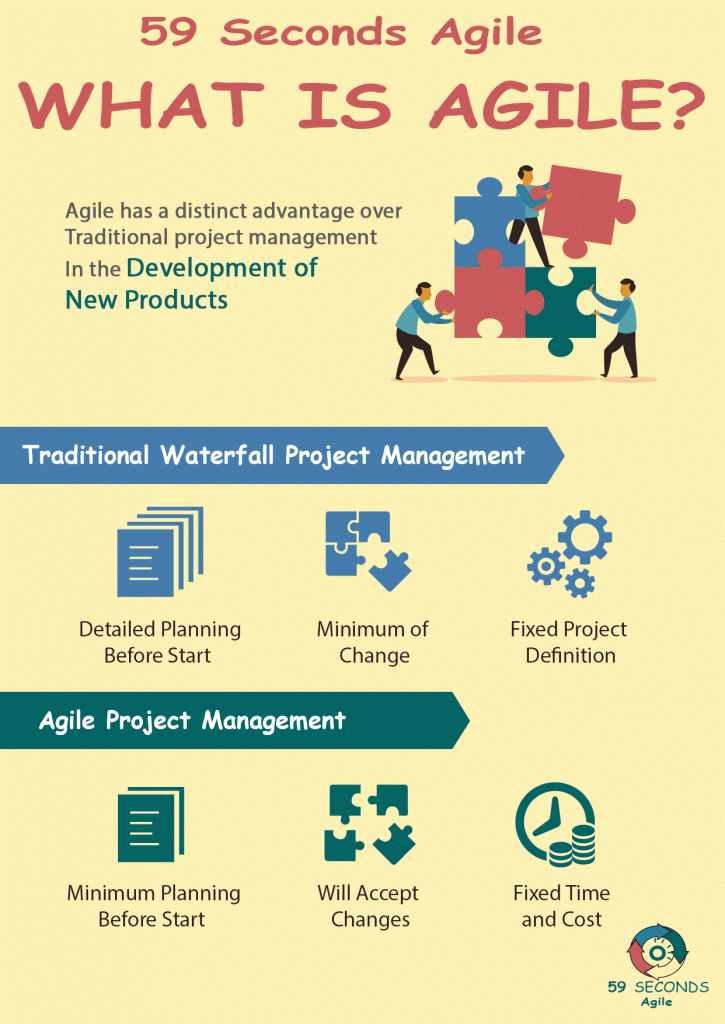An Introduction to Agile
A 59 Seconds Agile Training Video
Continue to the Next Section Below
Introduction to Agile: Conclusions
A 59 Seconds Agile Article
This article provides an ‘Introduction to Agile’ and looks to discuss the challenges in traditional project management. It provides a brief introduction into traditional projects and the challenges encountered.
Introduction to Agile Conclusions
In closing, Agile describes a set of principles designed for the development of software products, the theory however applies to a wider catchment. The Agile principles also work for the delivery of projects and other products and services. Furthermore, it promotes flexibility as well as high performance through adaptive planning.
It also focusses around evolutionary development, early delivery, and continuous improvement with a requirement for a self-organising cross-functional team.
Following the Agile values and principles will give your business a competitive advantage in employee engagement, stakeholder satisfaction and rapidly meeting the needs of customers. Agile frameworks such as Scrum provide a circular process that supports continuous improvement through the inspect and adapt process. When these circular processes are kept short, the product can quickly adapt to changing market conditions and easily accommodate new requirements, giving the organization a competitive advantage.
Prioritizing the highest value requirements for each increment of the product development then ensures continuous delivery of the highest value.
Continue Reading —> Next
The Benefits of Agile
A 59 Seconds Agile Video Animation
Continue Reading —> Next
User Stories Applied
A 59 Seconds Agile Book Review
User Stories Applied by Mike Cohn is one of our favourite books on Agile User Stories. The book starts with an overview into user stories, and details what a user story is and the different aspects of them. He then discusses how to go about writing a user story, and provides details of the INVEST criteria that can be used to determine if the story is meeting all of its objectives. Next Mike gives an in depth discussion of who user stories are written for and where to begin when gathering the details for them. The book then discusses acceptance testing user stories, including how to go about specifying these criteria and the responsibilities of the development team and customers during this process.
Continue Reading —> Next
What is Agile?
A 59 Seconds Agile Infographic

Continue Reading —> Next
Agile Scrum Master Training Course
Our Favourite Agile Books
We found these books great for finding out more information on Agile Scrum:
Continue Reading —> Next


